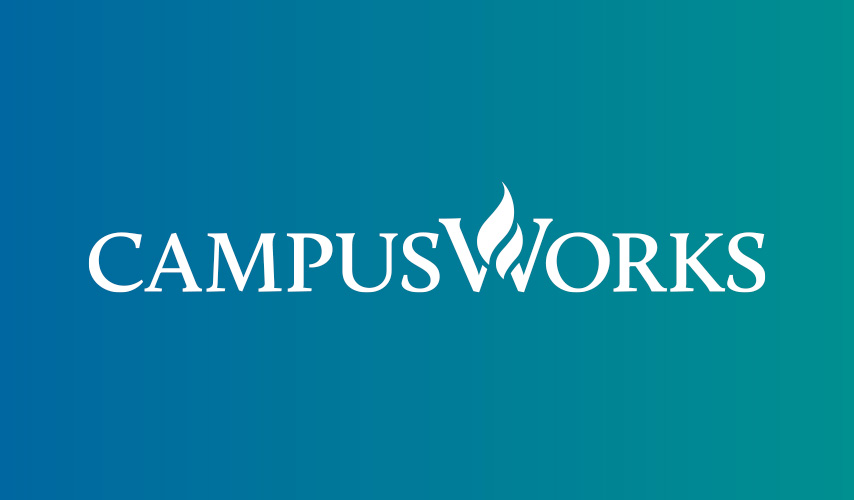
How to Identify & Help At-Risk Students Before It’s Too Late
By Chrissy Coley, PhD
 The COVID-19 crisis is having a devastating effect on college students’ mental health. Active Minds’ April 2020 survey of more than 2,000 college students revealed that 91% of students are experiencing higher levels of stress or anxiety, 81% indicated higher levels of disappointment or sadness, and 80% reported experiencing loneliness or isolation. Most concerning is that 55% of students said they do not know where to go if they or someone they know needs professional mental health services right away.
The COVID-19 crisis is having a devastating effect on college students’ mental health. Active Minds’ April 2020 survey of more than 2,000 college students revealed that 91% of students are experiencing higher levels of stress or anxiety, 81% indicated higher levels of disappointment or sadness, and 80% reported experiencing loneliness or isolation. Most concerning is that 55% of students said they do not know where to go if they or someone they know needs professional mental health services right away.
This concern is echoed by college and university presidents—41% reported that student mental health is one of their most pressing issues, according to an American Council on Education (ACE) survey conducted in April. In response to these growing concerns, CampusWorks Executive Advisory Board Member Cary Israel, JD, the district president emeritus of Collin College (TX) recently wrote an article, “In the Era of Social Distancing, Collaboration is the Answer to the Student Mental Health Crisis,” which explored how institutions can engage cross-functional action teams to identify at-risk students and intervene in a timely manner.
Based on my experiences as the assistant vice provost for student success initiatives at the University of South Carolina and vice president for student engagement and success at Barton College, I’d like to expand on Cary’s ideas by sharing a two-prong cross-campus partnership model I’ve found to be effective in offering a structured, data-informed methodology for identifying at-risk students, managing referrals and responses, and triaging care.
The First Prong: Early Alert & Intervention Team
The first prong consists of an Early Alert and Intervention Team (EAIT), which proactively identifies and engages at-risk students based on pre-enrollment factors, academic performance, social challenges, or personal loss. This team proactively uses data, through systems and referrals, to identify students who may be experiencing academic, personal, social, financial, health, and relationship struggles.
Red flags include:
- Class absences
- Poor academic performance on assignments and tests
- Lack of engagement in class activities and discussions
- Late submission of work
- Failure to pre-register for classes or make timely payment
- Isolation/poor social integration
- Health issues/concerns
- Financial concerns
- Death of a family member or friend
When at-risk students are identified, the EAIT establishes communication and routes them to the most appropriate responder, campus resource, or support system based on need. Interventions may include automated communications from the student success system, personal outreach by advisors or coaches, and connection with relevant campus resources.
The EAIT tracks each student’s progress and monitors intervention efficacy. They also educate campus community members on academic and social integration red flags, engagement initiatives, support services, and referral processes to help ensure no one slips through the cracks.
In my experience, the EAIT reviewed and triaged reports on a wide spectrum of issues. In many cases, the reports were relatively minor in nature, and the students simply needed a reminder about curricular and co-curricular expectations, as well as a nudge to the right campus resource. For example, we once had a first-year student who was consistently missing class. The EAIT discovered the student didn’t know about the college’s attendance policy and the rationale behind it. Upon intervention, the student started attending class regularly and earned stellar grades in all courses.
In some cases, the reports were more serious and required intensive intervention solutions. One of my former EAITs worked with a student who was consistently turning in late work and earning poor grades on assignments and tests. Upon intervention, the team discovered the student had had an Individualized Educational Plan (IEP) in high school but had not registered for accommodations in the Student Disabilities Office, which enabled access to the resources and accommodations needed for success. In many cases, a swift and targeted intervention can make a meaningful difference.
How to organize an Early Alert and Intervention Team (EAIT):
The EAIT is typically chaired by the director of retention, director of academic advising, or dean of students. Team members often include representation from Academic Advising, Academic Support Services, Counseling Services, Student Health Services, Access and Accommodations/Disability Services, Athletics, Residence Life, Student Activities/Involvement, Chaplain’s Office, Dean of Students Office, and First-Year Experience. The EAIT may also include representatives from Admissions, Financial Aid, and General Education. A weekly or bi-weekly meeting frequency enables this team to maintain frequent communication and stay abreast of emerging issues on campus.
The Second Prong: Behavioral Intervention Team
The second prong consists of a Behavioral Intervention Team (BIT), which uses established protocols to detect early indicators of the potential for disruptive conduct, self-harm, and the risk of violence to others. The BIT is responsible for developing policies and establishing standards for addressing legitimate safety risks to the person and/or community. The team also educates the campus community on mental health issues, red flags/warning signs, and reporting processes to help expand the number of eyes and ears monitoring for issues.
Early indicators include:
- Aggression
- Severe anxiety
- Bizarre behavior
- Depression
- Disturbed writing
- Eating disorders
- Heightened emotional distress
- Suicidal ideation/remarks/attempts
- Threats
- Withdrawal from social groups
When the BIT identifies students who potentially pose a threat to themselves or the campus community, the team conducts investigations, performs threat assessments, and determines the most effective mechanisms for support, intervention, warning/notification, and response.
At one of my previous institutions, the BIT received a report about a student who had expressed thoughts about potential self-harm. Based on the wellness check with the student, the BIT recommended voluntary admission at the local hospital. The student agreed. Upon release a week later, the student returned to campus with a treatment plan that was jointly monitored by the Counseling Center (with written consent by the student) and the medical professional. The student not only stayed well but also completed all courses successfully and got involved on campus as a peer leader.
How to organize a Behavioral Intervention Team (BIT):
The BIT is typically chaired by the vice president for student affairs, dean of students, or director of student conduct. This individual should be trained and certified by the National Behavioral Intervention Team Association (NaBITA). Team members typically include the vice president of student affairs/dean of students, director of student conduct, director of counseling services, chief of campus police, or their designees. It may also include an associate provost, director of residence life, director of human resources, Title IX coordinator, and/or director of access and accommodations/disability services. A weekly or bi-weekly meeting frequency enables this team to maintain frequent communication and stay abreast of emerging issues on campus.
The National Behavioral Intervention Team Association (NaBITA) provides extensive recommendations for the purpose, composition, and activities of campus BIT Teams. The NaBITA Risk Rubric and white paper can provide additional guidance on behavioral and risk evaluation for teams. Campuses are strongly encouraged to consult with their legal counsel when drafting voluntary and involuntary leave and return-to-campus policies.
The Partnership
It is important for the Early Alert & Intervention Team and Behavioral Intervention Team to work closely with one another to coordinate efforts and optimize resources. One common strategy is to design intentional overlap in EAIT and BIT representation, most often from the Dean of Students Office and Student Health Services/Counseling Office. This shared membership model enhances communication flow and reduces duplicated efforts. An emerging practice is for the EAIT and BIT chairs to meet on a regular basis to ensure appropriate exchange of information, design collaborative team trainings, organize campus educational efforts, and establish formal channels to refer students to the other body when warranted.
All EAIT and BIT members should receive compliance training in the Family Educational Rights and Privacy Act (FERPA), the Health Insurance Portability and Accountability Act (HIPAA), and relevant federal and state regulations that protect student privacy. Teams should use a secure and easily searchable electronic data management system to maintain records of all referrals, interventions, and case notes to ensure privacy and security.
In honor of Mental Health Awareness Month, we encourage you to assemble key academic and administrative stakeholders to promote cross-functional dialogue and collaboration that advances student well-being and success. If you need helping getting started, contact CampusWorks today »
About the Author
 Chrissy Coley, PhD has dedicated her career to advancing student success. She is a portfolio executive leader at CampusWorks, a strategic higher education consulting firm that transforms institutions so students, faculty, and staff thrive. Prior to joining CampusWorks, Chrissy served as the assistant vice provost for student success initiatives at the University of South Carolina and vice president for student engagement and success at Barton College.
Chrissy Coley, PhD has dedicated her career to advancing student success. She is a portfolio executive leader at CampusWorks, a strategic higher education consulting firm that transforms institutions so students, faculty, and staff thrive. Prior to joining CampusWorks, Chrissy served as the assistant vice provost for student success initiatives at the University of South Carolina and vice president for student engagement and success at Barton College.
About CampusWorks
Founded in 1999, CampusWorks is a strategic consulting firm that transforms higher education institutions by providing an independent perspective and creative solutions to improve operations, reduce costs, and position students for success. Learn more at campusworksinc.com.

